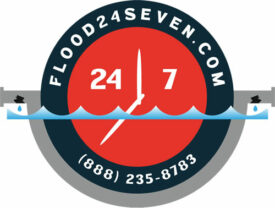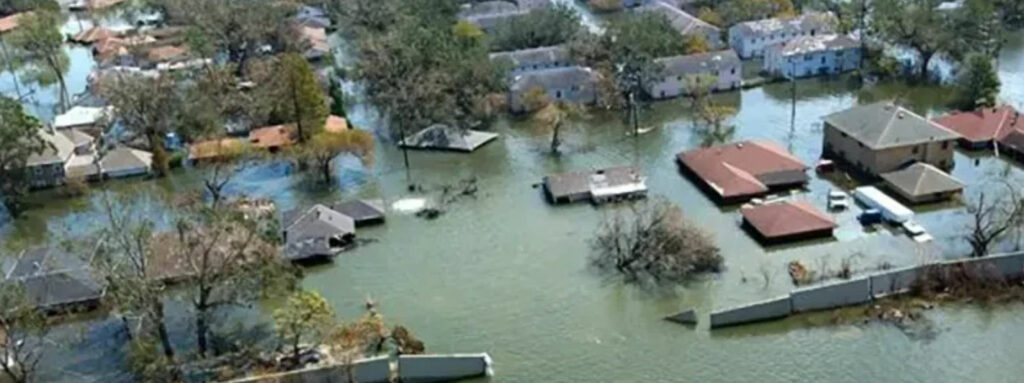According to Suffolk and Nassau Counties sources, there are many reasons why you may experience a flood. When you need us, Flood 24/7 has extensive experience to help restore your home after a flood.
Suffolk County / Nassau County: Causes of Flooding
Flooding can be caused by a variety of factors. One major cause is tropical storms and hurricanes. These powerful weather events bring high winds, heavy rain, and flying debris, which can lead to storm surges and widespread flooding. When hurricanes weaken into tropical storms, they usually slow down in velocity which is why they generate huge amounts of rainfall and flooding that can be especially damaging since the rain usually collects in one place.
Another cause of flooding is the spring thaw. During this time, frozen land prevents melting snow or rainfall from being absorbed into the ground. As a result, streams, rivers, and lakes can overflow, causing serious flooding. Spring storms can exacerbate this issue and lead to even more flooding.
Heavy rains are also a common cause of flooding. In certain areas, conditions devleop that bring unexpected amounts of rainfall in a short time. Excessive rainfall throughout the year can put properties at risk of flooding.
Flash floods are another major cause of flooding and are the leading weather-related killer in the US. These rapid floods occur in low-lying areas within a short period of time, often caused by intense rainfall from thunderstorms or the collapse of man-made structures or ice dams. Rapid flooding can cause significant destruction, including the tearing out of trees, rolling of boulders, and damage to buildings and bridges.
Lastly, new development can contribute to flooding. The construction of buildings, parking lots, and roads reduces the amount of land available to absorb excess precipitation from heavy rains, hurricanes, and tropical storms. This alteration of natural drainage can create new flood risks in previously unaffected areas.
Suffolk County:
- Amityville
- Babylon
- Copiague
- Commack
- Dix Hills
- Islip
- Huntington
- Lindenhurst
- Merrick
- Northport
- Smithtown
- Stony Brook
- Wantagh
- Wyandanch
- South Hampton
- Montauk
Nassau County:
- Bellmore
- Freeport
- Glen Cove
- Great Neck
- Manhasset
- Massapequa
- Merrick
- Mineola
- Long Beach
- Lynbrook
- Oceanside
- Port Washington
- Rockville Center
- Roslyn
- Seaford
- Wantagh
Taking Care of Your Long Island Home After Flooding
Returning to a flooded home can be overwhelming and dangerous, so it’s important to take precautionary steps to ensure your safety. Turn off the electricity at the main breaker or fuse box, even if the power is off in your community. That way, you can decide when your home is dry enough to turn it back on.
- Wait for clearance: Do not enter your home until local authorities have declared it safe to do so. They will assess the structural integrity and potential hazards before allowing residents to return.
- Dress appropriately: Wear protective clothing, including rubber boots, rubber gloves, goggles, and a face mask, to protect yourself from contaminants present in floodwater.
- Document the damage: Take photos or videos of the flood-damaged areas for insurance purposes. This documentation will help with your insurance claim.
- Assess the damage: Evaluate the extent of the damage caused by the flood. Check for structural integrity, water damage to walls, furniture, appliances, and other personal belongings. Be cautious of sagging ceilings or walls, as they may collapse.
- Remove stagnant water: If the floodwater has receded, start removing the remaining water using pumps, wet/dry vacuums, or by calling professional water removal services. Open windows and doors to allow airflow and expedite drying.
- Clean and disinfect: Thoroughly clean and disinfect all surfaces that came into contact with floodwater. Use a bleach solution (1 cup bleach to 5 gallons of water) or other disinfectants recommended by health authorities.
- Dispose of contaminated items: Discard any items that cannot be adequately cleaned or disinfected, such as mattresses, carpets, upholstered furniture, and food items that have been exposed to floodwater.
- Dry out your home: Use dehumidifiers, fans, and open windows to dry out the affected areas. It’s crucial to remove all moisture to prevent mold growth.
- Seek professional help: If the damage is extensive or you’re unsure about any aspect of the cleanup process, it’s advisable to seek our professional assistance with residential or commercial remediation services.
Remember, safety should be your top priority when returning to a flooded home. Take your time, follow these steps, and consider seeking guidance from local authorities or professionals to ensure a safe recovery.

